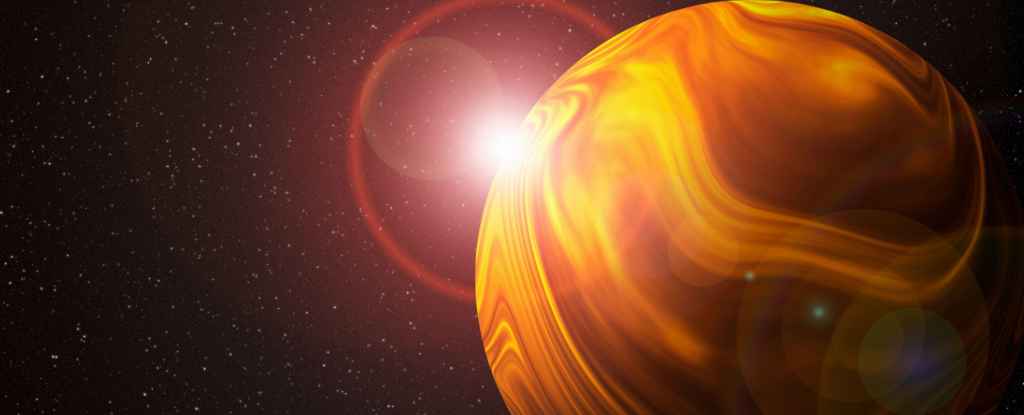If you were to perfectly follow the steps in An Idiot’s Guide to Making a Solar System, you should eventually find yourself with a star surrounded by a flat disc of planetary material orbiting in relatively neat, circular paths.
But our own Solar System’s disc is relatively warped, with the orbits of its planets slightly tilted and more oval than circular. What happened to it?
It’s possible a heavy object fell into the mix early in the Solar System’s formation, leaving an everlasting impression on the planetary orbits, before this mysterious interloper drifted out again.
The hypothesis is suggested in new research by University of Toronto physicists Garett Brown and Hanno Rein working with University of Arizona planetary scientist Renu Malhotra.
Even given the right galactic alignments, the odds that this may have occurred are at best around one in 1,000 – far short of a conclusive explanation, but well worth keeping the hypothesis in the back pocket in case supporting evidence appears.
It’s now relatively clear objects from outside of our Solar System tumble towards the Sun’s mass from time to time, typically picking up enough speed over astronomical distances to shoot back out into the cosmos again. In 2017, the asteroid Oumuamua dipped in and out of our Solar System, providing astronomers with the perfect opportunity to muse on the long history of interstellar visitors.
Of course, Oumuamua’s presence was like a drop in a lake. What if something heavier were to plough through the Solar System’s waters?
Brown, Rein, and Malhotra did the sums, finding an object somewhere between 2 and 50 times Jupiter‘s mass curving around the Sun somewhere inside Uranus‘s orbit at a speed that would allow it to escape could jostle our giant planets into orbits not unlike the ones we see today.
Refining their models by simulating some 50,000 variations raining down from a hypothetical cluster of nearby stars, the researchers found the best match for the eccentric orbits of our planetary siblings was a mass just over 8 times that of Jupiter, coming close to the present orbit of Mars at a speed of 2.69 kilometers per second.
Further simulations on flybys into the inner Solar System revealed one of our own planets might be flung out of the ballpark within the following 20 million years or so in just 2 percent of cases. In all others, the inner planets remained in slightly altered but still relatively harmonious orbits.
Though the chances of this event would be slim – somewhere between 1 in 1,000 and 1 in 10,000 – opportunities for such a roll of the dice may not be uncommon, with the Milky Way full of suitable star clusters.
“In other words, we don’t need to look for a needle in a haystack to find a suitable encounter,” the authors write in a report that is yet to be peer-reviewed.
With the nearest star currently more than 4 light-years away, it’s easy to imagine our place in the galaxy as relatively isolated. Yet like our own planet, the Sun is on a path that brings it close to other lone stars and stellar clusters, not to mention cold, dark planets wandering rogue in interstellar space.
What’s in store for our wonky little family of planets in the future is unknown. But there’s a fleeting chance the Solar System may one day find itself even more bent out of shape than it is today.
This research is available on the preprint server, arXiv.





